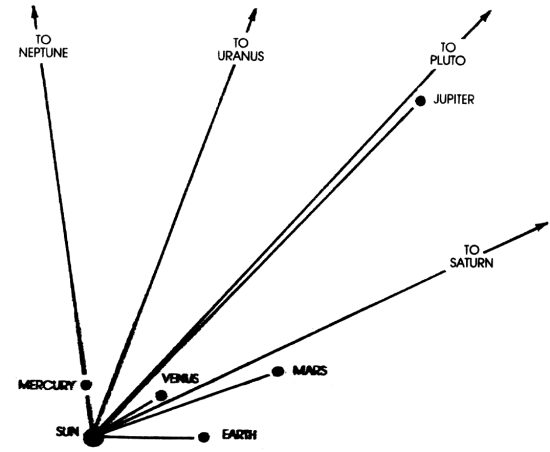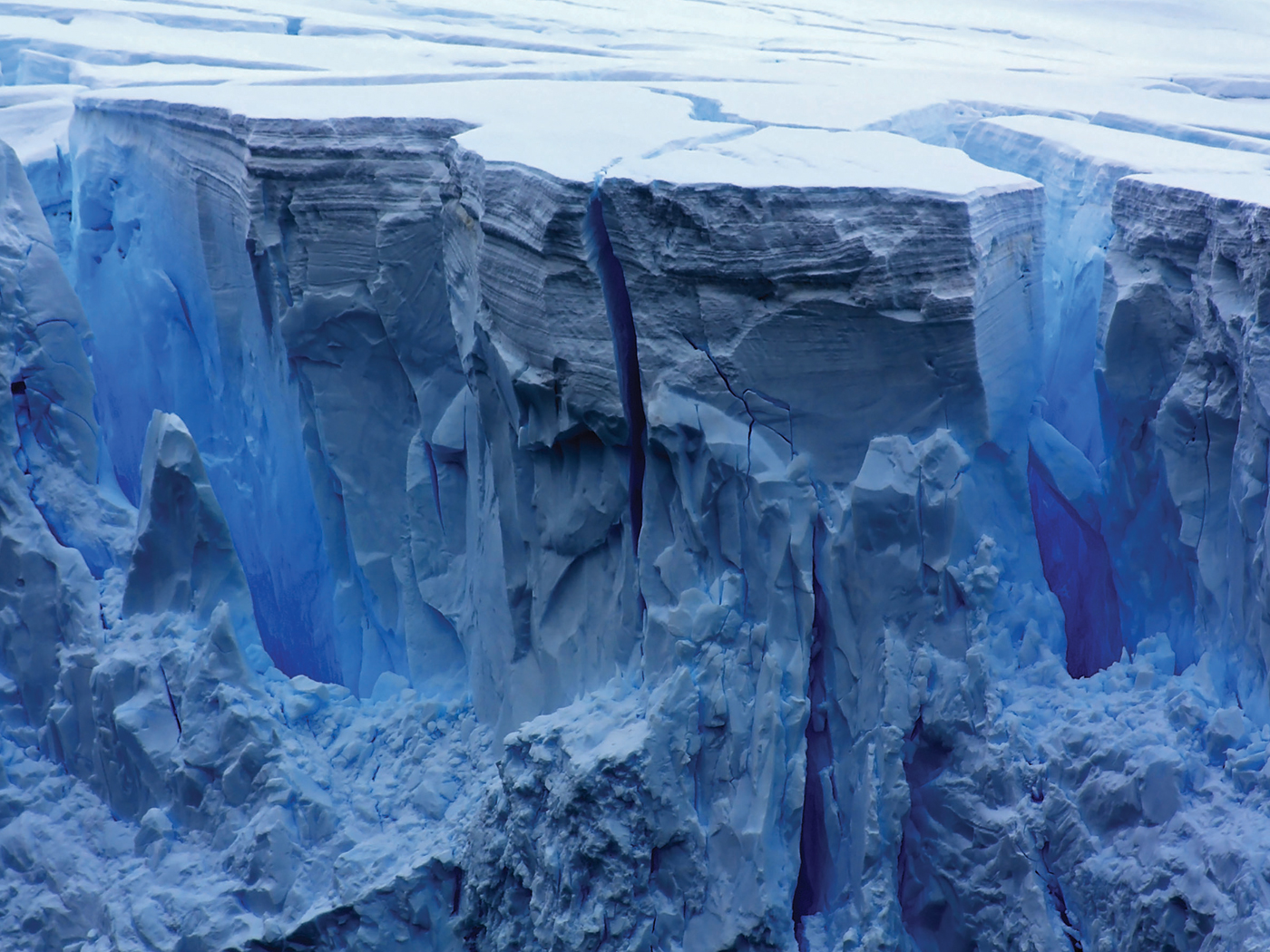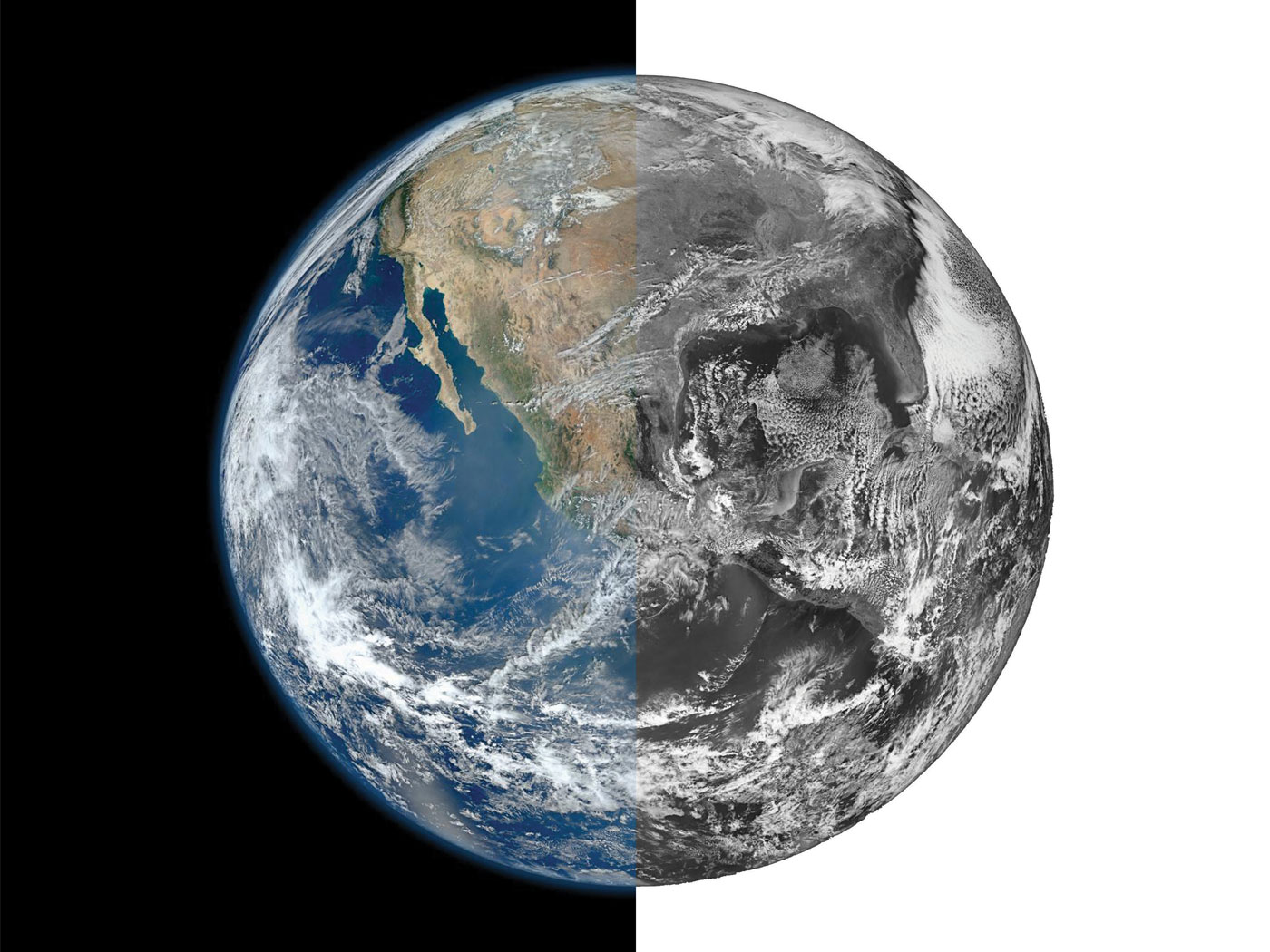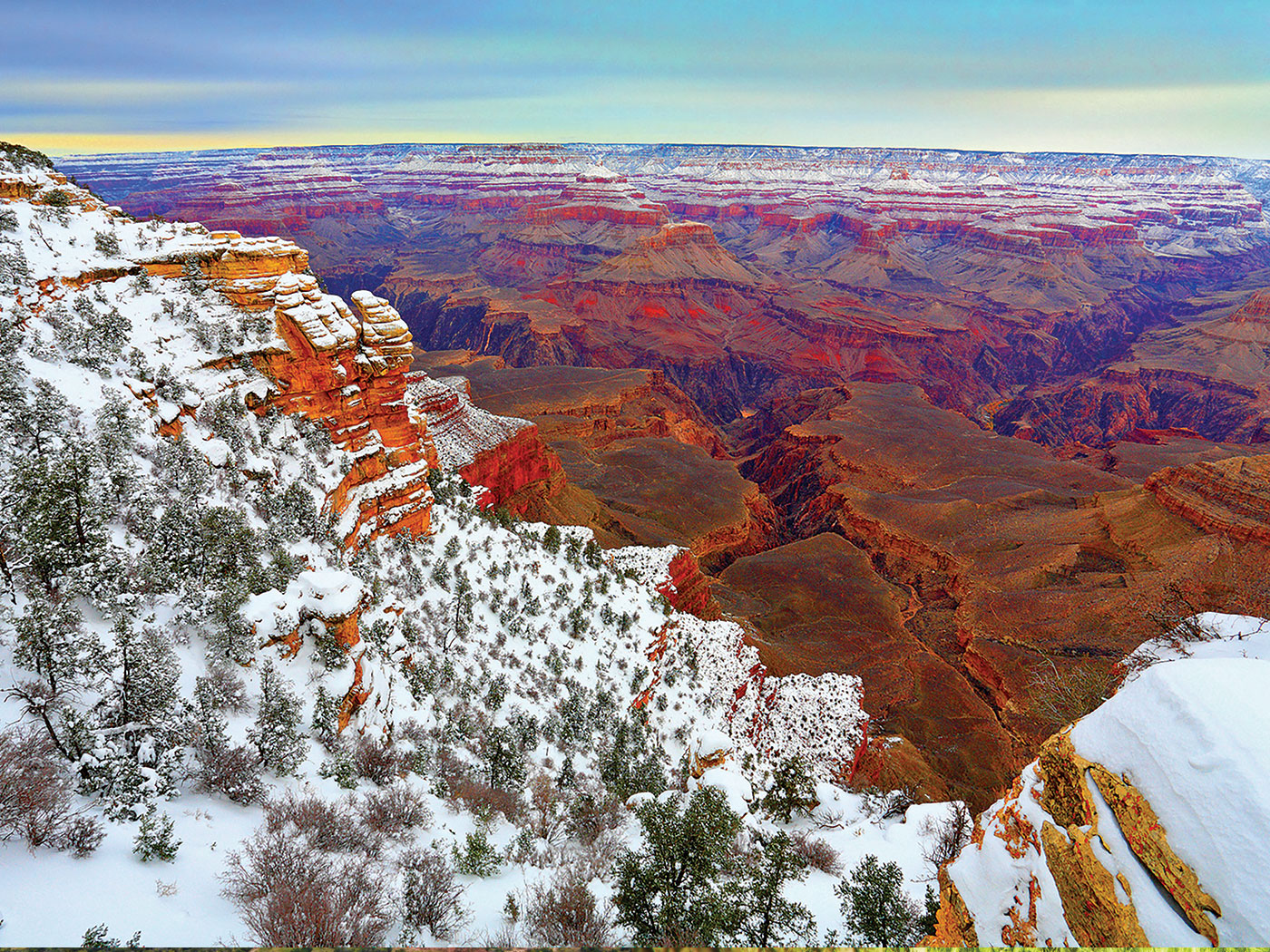The decade of the 1980's will be an exciting period for creationist astronomy. Voyager spacecraft launched in 1977 will take a grand tour of the outer planets. Initial photographs of the dynamic, recently created Jupiter-moon system have already bewildered evolutionary scientists. Halley's Comet will make its appearance around 1986. (Comets are temporary, decaying objects which indicate a recent creation of the solar system.) The space telescope will ride the space shuttle into earth orbit in 1983. This instrument will further challenge men with God's glory in the heavens. Then there is the proposed 1982 Jupiter Effect! This is a prediction of major earthquakes during 1982 due to an unusual alignment of the planets. Especially targeted for destruction is the Los Angeles region of the San Andreas fault system. The idea was first proposed by John Gribbin and Stephen Plagemann in 1974.1 At first it sounds like the typical nonsense arising from astrology. However, these two men are scientists, both holding Ph.D.'s in astronomy from the University of Cambridge. Their discussion of the 1982 catastrophe has received mixed reactions. The Library Journal accepted the report and even recommended that the government begin planning for the disaster.2 Most scientific reviews were critical of the prediction.3
Interest in the Jupiter Effect has largely subsided, at least temporarily. However, this prediction of future earthquakes is of special interest to Bible believers. After all, the Scripture states repeatedly that earthquake activity is one sign of the close of this age (Luke 21:11). Could it be that the 1982 Jupiter Effect is the fulfillment of this Bible prophecy? Let us consider the theory in detail to determine whether the Jupiter Effect is valid.
JUPITER EFFECT THEORY
Gribbin and Plagemann propose the following chain of events leading to the 1982 destruction:
- The planets will be lined up on the same side of the sun during 1982. Since they orbit the sun at various distance and speeds, this event is very unusual.
- Each of the planets exerts a gravitational tidal pull on the sun. When aligned, their combined force will substantially affect the sun.
- The sun will respond with increased surface activity in the form of sunspots and eruptions. This also implies an increase in ejected solar wind particles (charged particles such as electrons and ions) throughout the solar system. Those impinging on the earth will cause large-scale movement of air masses.
- The resulting atmospheric disturbance will alter the earth's rotation rate. Variations in the earth's spin will trigger regions of geologic instability, causing widespread earthquakes.
JUPITER EFFECT ANALYSIS
The listed events sound reasonable and logically related. However, let us carefully evaluate each link:
1. Gribbin and Plagemann in the first edition of their book describe the alignment as a "super-conjunction with all nine planets in a line on the same side of the sun."4 However, this statement greatly exaggerates the actual event. The published illustrations of this alignment have been more sensational than factual. Figure 1 shows the narrowest configuration of planets in this century, occurring on March 10, 1982.5 Notice that the planets are spread out over 98 degrees on this date. The four major planets, Jupiter, Saturn, Uranus, and Neptune, will span an arc of some 73 degrees. In the second edition of their book (1976), the authors leave out the statement regarding a super-conjunction. Thus they have dropped the basis of their whole argument.
2. The planets do, indeed, produce a tidal pull on the sun, but the combined force is very small. For a planet with mass m and distance r from the sun, the solar tidal force is proportional to the quantity m/r3. Table 1 shows that this inverse cube dependence on distance makes the tidal effect of the outer planets entirely negligible. Jupiter gives the largest relative pull due to its mass, hence the symbolic name "Jupiter Effect." Table 1 further shows that Mercury, Venus, Earth, and Jupiter dominate the tidal effect, but these are the planets with the least alignment.
Incidentally, notice in Table 1 that Pluto is not presently the outermost planet of the solar system. Due to its highly elliptical orbit, part of its path around the sun actually falls inside Neptune’s orbit. Pluto crossed inside Neptune in 1978 and will remain the eighth planet until the year 2000. There is no danger of collision because Pluto’s orbit is tilted out of the plane of the solar system.
 |
| Figure 1. The planetary configuration of March 10, 1982. The positions were taken from Table 1. |
Just how significant is the solar tidal force? Let us compare the tidal pull of our moon on the earth with that of Jupiter on the sun. The Jupiter-sun separation is 2,024 times the earth-moon distance, and Jupiter's mass is 25,850 times that of the moon. Hence, the Jupiter-sun tidal force is only that of the familiar earth-moon force. That is, the earth tidal pull due to our moon is nearly one-third million times greater than the solar pull due to Jupiter! Further calculations show that the actual height of the tidal bulge caused by Jupiter on the sun is less than one millimeter!6 The stable sun certainly appears to have been formed for man's advantage, not for his annihilation!
| 25,850 | = 3.1 x 10-6 |
| (2024)3 |
3. Does an increased tidal pull on the sun lead to greater solar activity? This question has been debated for years and still remains uncertain. The sun does have an eleven-year cycle of sunspot activity, but the reason for this is unknown. The next maximum of solar activity may occur near the end of 1979.7 Thus, there should actually be a decrease in solar disturbance by 1982, not an increase.
Excluding Pluto, a rough alignment of the planets Jupiter through Neptune occurs about every 179 years. Thus, the Jupiter Effect hypothesis may be evaluated by checking the records for the similar alignment of 1804. The result is that sunspot activity was exceedingly weak during that year!8
If the Gribbin-Plagemann theory is correct, there should also be high solar activity whenever the planets are lined up on both sides of the sun. After all, tidal bulges always occur in pairs on opposite sides of the object, whether on the earth or the sun. If the planets do something violent to the sun when they are in conjunction, then they should have the same damaging effect when in opposition. The situation of a narrow opposition (25° ) last occurred in 1901. Records show that to be a year in which the sun reached a quiet minimum of activity! History does not support the Jupiter Effect.
4. Increased solar activity does, indeed, lead to an increased flux of solar particles. Those that impinge on the earth are evidenced by bright aurora displays and communication problems, but not earthquakes. No correlation has been found between solar activity, changes in the earth's rotation rate, and earthquakes. During the great solar flares of 1960 and 1972, for example, no changes occurred in the earth's spin. A study of 9,697 major earthquakes has shown no dependence on solar activity.9 Another survey was made of solar activity with respect to the positions of Venus and Earth during the years 1902 to 1965.10 No meaningful correlation was detected between sunspots and the alignment of these two planets.
| Planet | Distance
from Sun, r |
Mass m |
Tidal
Effect on sun, m/r3 |
Angle between planet and earth in degrees (March 10, 1982) |
| Mercury (perihelion) | 0.3075 | 0.0553 | 1.90 | 98 |
| Mercury (aphelion) | 0.4667 | . | 0.54 | . |
| Venus | 0.7233 | 0.8150 | 2.15 | 30 |
| Earth | 1.0 | 1.0 | 1.0 | - |
| Mars (perihelion) | 1.381 | 0.1074 | 0.041 | 19 |
| Mars (aphelion) | 1.666 | . | 0.023 | 19 |
| Jupiter | 5.203 | 317.89 | 2.26 | 46 |
| Saturn | 9.539 | 95.17 | 0.11 | 25 |
| Uranus | 19.182 | 14.56 | 0.002 | 69 |
| Pluto (perihelion) | 29.65 | 0.002 | 0.0000001 | 47 |
| Neptune | 30.058 | 17.24 | 0.0006 | 98 |
CONCLUSION
It is clear that the scientific reasoning for the Jupiter Effect is invalid. The planets will not be closely aligned in 1982, and such an alignment would have no effect on earthquake activity regardless. Furthermore, the Jupiter Effect fails the test of reproducibility in history. This discussion reminds us of the inherent uncertainty of all natural scientific ideas. Some are false from the beginning; others change gradually as new data accumulate. Only the special revelation of God through His Son and His Word provides a sure foundation for truth. If not 1979, then the year 1982 may, indeed, introduce the end time events of this age. Our duty is to have our hearts prepared and to be redeeming the time on a daily basis. Mark 13:32 reminds us that no one knows the exact time of the events accompanying our Lord's return to earth. One thing is certain: The Jupiter Effect does not enter the picture because the effect does not exist.
REFERENCES
1 Gribbin, J. and Plagemann, S., The Jupiter Effect, New York: Walker and Co., 1974. p. 261.
2 Walter, K. G., Jupiter Effect review in the Library Journal, 99:2975, 1974.
3 Physics Today, 28:4, 1975, pp. 74-5; Science, 186, 1974, pp. 728-9; American Scientist, 62, 1974, pp. 721-2.
4 Gribbin, p. 127.
5 Data are from the U.S. Naval Observatory.
6 Meeus, J., "Comments on The Jupiter Effect," Icarus, 26, 1975, p. 261.
7 Kane, R.P., "Predicted intensity of the solar maximum," Nature, 274:5667, 1978, pp. 139-40.
8 Meeus, p. 265.
9 Van Gils, J.M., "Etude statistique des tremblements de terre enregistres a Uccle de 1920 a 1945," Ciel Terre, 65, 1949, pp. 125-40.
10 Meeus, p. 258.
* Donald B. DeYoung received his B.S. and M.S. degrees in applied physics at Michigan Technological University and a Ph.D. from Iowa State University in physics. He is Chairman, Physical Sciences, at Grace College, Winona Lake, Indiana. During the 1978-79 academic year he is serving as a Visiting Professor of Science and Mathematics at Christian Heritage College, El Cajon, California. He is a member of several honorary societies and the Indiana Academy of Sciences. Dr. DeYoung has published technical papers in physics and is co-author with John C. Whitcomb of the recent book, The Origin of the Moon.





















